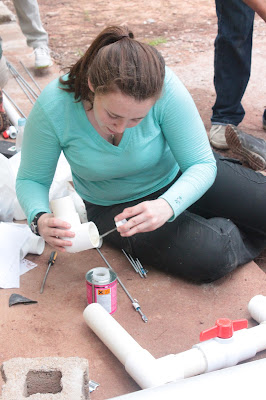Buenas!
Today the AguaClara team members were able to view and compare AguaClara technology with that of a conventional treatment plant. Having spent the past two days in Atima, home of the most recently completed AguaClara plant offering the latest in AguaClara designs, we were able to directly compare the benefits and also downfalls of AguaClara plants and conventional design. Having this experience was truly incredible. Due to an original technical difficulty which caused additional issues, the conventional plant in Siguatepeque was unable to operate at its full potential. Because of the plant's reliance on automation, operators were left with multiple problem areas. This has proved one thing: simplicity is key. While AguaClara technologies are smaller scale and not yet able to produce the same quantity as the conventional plant, our assurance in the AguaClara philosophy was re-confirmed.
After reflecting on our experiences so far, we all recognize that though the work we are doing in Honduras and in Ithaca is making a difference, there are so many other parts of a clean, healthy water system that enable it to function and succeed. I'm sure that we will have many more eye-opening and enlightening experiences in the remaining time we have in Honduras, and hopefully we can keep all of you in the loop!


